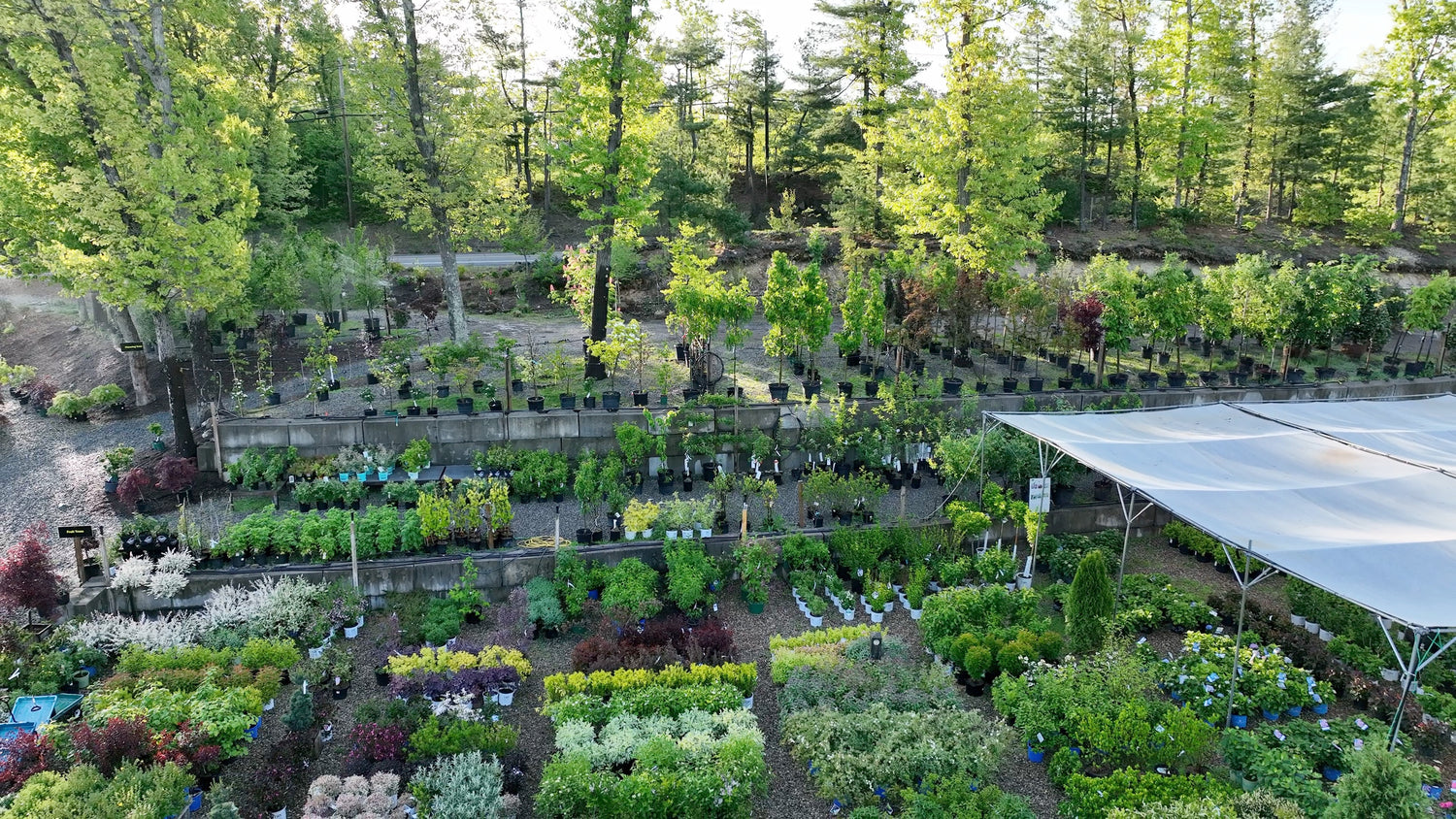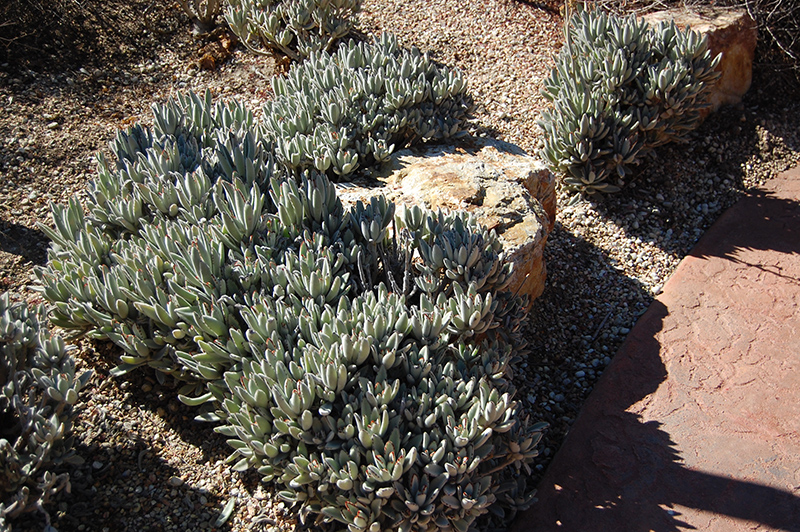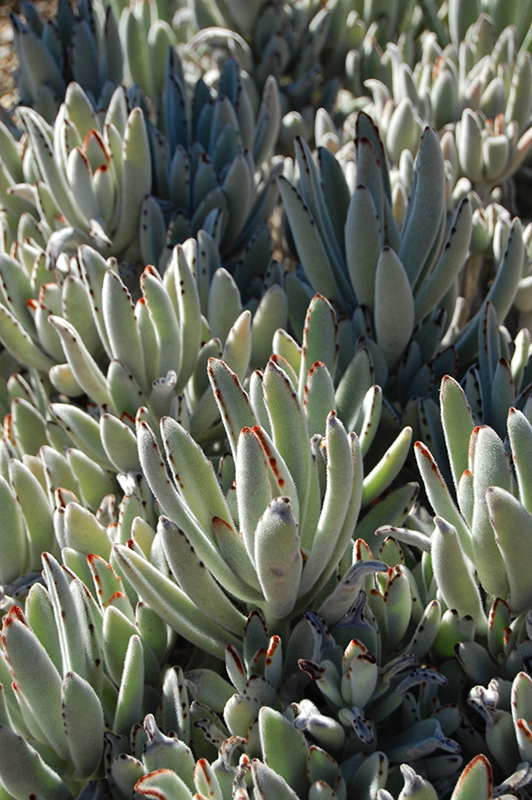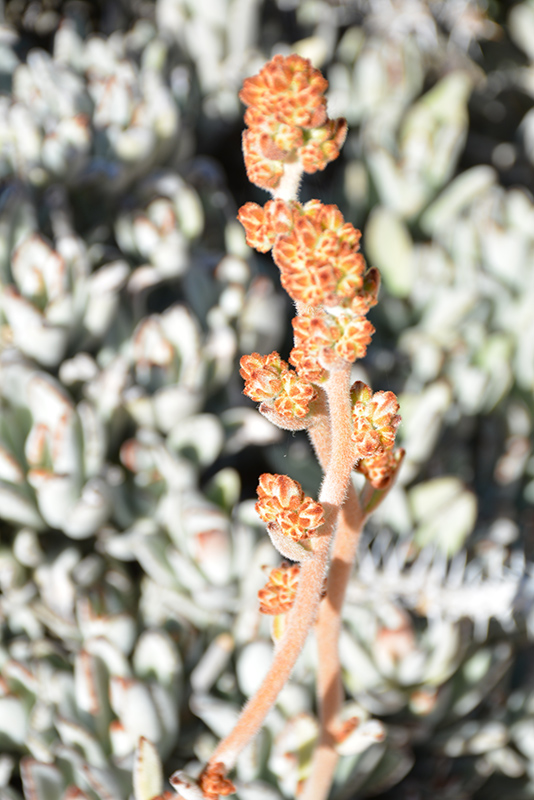Plant Guide
Height: 14 inches
Spacing: 8 inches
Sunlight:
![]()
![]()
Hardiness Zone: (annual)
Other Names: Teddy Bear Cactus, Pussy Ears
Description:
A pretty addition to the rock garden or containers; oblong, gray-green leaves with reddish-brown spots have a unique felted texture; occasionally displays chartreuse flowers that are tinged with purple; easy to grow and a great houseplant as well
Ornamental Features
Panda Plant features showy clusters of chartreuse bell-shaped flowers with red overtones rising above the foliage from late winter to early spring, which emerge from distinctive orange flower buds. Its attractive tomentose oval leaves remain grayish green in color with distinctive brick red spots and tinges of silver throughout the year.
Landscape Attributes
Panda Plant is an herbaceous annual with an upright spreading habit of growth. Its medium texture blends into the garden, but can always be balanced by a couple of finer or coarser plants for an effective composition.
This is a relatively low maintenance plant, and should only be pruned after flowering to avoid removing any of the current season's flowers. Deer don't particularly care for this plant and will usually leave it alone in favor of tastier treats. It has no significant negative characteristics.
Panda Plant is recommended for the following landscape applications;
- Accent
- Rock/Alpine Gardens
- General Garden Use
- Container Planting
Planting & Growing
Panda Plant will grow to be about 12 inches tall at maturity, with a spread of 10 inches. When grown in masses or used as a bedding plant, individual plants should be spaced approximately 8 inches apart. Its foliage tends to remain dense right to the ground, not requiring facer plants in front. Although it's not a true annual, this plant can be expected to behave as an annual in our climate if left outdoors over the winter, usually needing replacement the following year. As such, gardeners should take into consideration that it will perform differently than it would in its native habitat. As this plant tends to go dormant in summer, it is best interplanted with late-season bloomers to hide the dying foliage.
This plant does best in full sun to partial shade. It prefers dry to average moisture levels with very well-drained soil, and will often die in standing water. It is considered to be drought-tolerant, and thus makes an ideal choice for a low-water garden or xeriscape application. It is not particular as to soil pH, but grows best in sandy soils. It is somewhat tolerant of urban pollution. This species is not originally from North America, and parts of it are known to be toxic to humans and animals, so care should be exercised in planting it around children and pets. It can be propagated by division.
Panda Plant is a fine choice for the garden, but it is also a good selection for planting in outdoor pots and containers. It is often used as a 'filler' in the 'spiller-thriller-filler' container combination, providing a mass of flowers and foliage against which the larger thriller plants stand out. Note that when growing plants in outdoor containers and baskets, they may require more frequent waterings than they would in the yard or garden.





